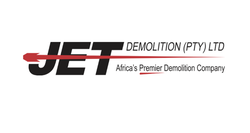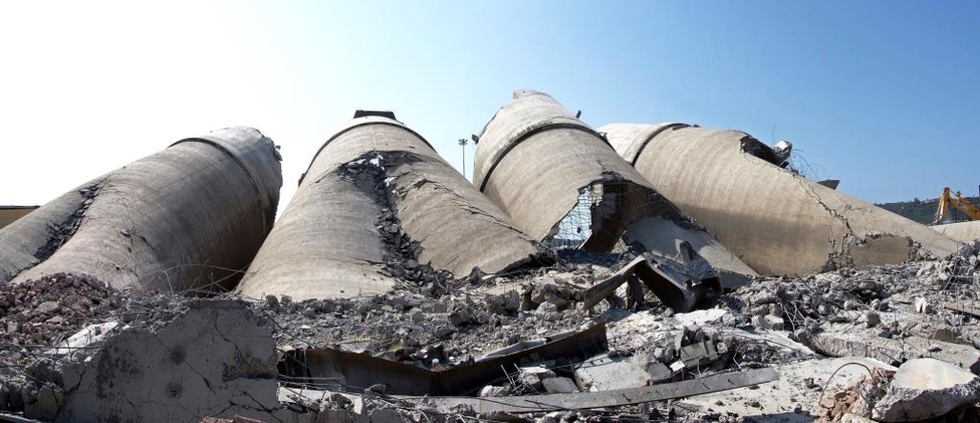Demolition of older compromised structures versus modern recyclable buildings
| Demolition of older compromised structures versus modern recyclable buildings | 34.5 KB | Download | |
| A ripping tool attached to a demolition excavator | 780.58 KB | Download | |
| A crusher suspended from a crane to crush in-situ concrete walls on silos | 1.59 MB | Download | |
| A hacking tool used to demolish thin slabs and beams from a distance | 2.67 MB | Download | |
| A mechanical pulveriser used to crush concrete in-situ | 1.99 MB | Download | |
| The largest demolition shear in Africa | 3.43 MB | Download | |
| Illustration of a typical site plant complement | 4.51 MB | Download | |
| Jet Demolition Contracts and Project Manager Kate Bester | 395.2 KB | Download |
“Demolition implications for older, compromised structures vary depending on the type, size, location and condition of the buildings or facilities,” notes Kate Bester, Contracts and Project Manager at Jet Demolition.
Common challenges and risks are the presence of asbestos and other hazardous materials that may pose health and environmental hazards during demolition and disposal. In addition, there could be structural instability and the potential for collapse due to deterioration, damage, or design flaws.
Noise, dust, vibration, and traffic disruption may impact residents, businesses, and infrastructure in the immediate vicinity. Legal and regulatory requirements in the form of permits, approvals, consultations, and notifications before, must also be considered, during and after demolition.
On the other hand, modern buildings tend to have recyclability incorporated into their design and construction. The use of sustainable materials such as bamboo, recycled steel, and reclaimed wood is becoming increasingly popular in modern construction. In addition, modern buildings are designed to be energy-efficient and incorporate features such as solar panels, rainwater harvesting systems, and green roofs.
Modern building design often incorporates the ease of disassembly and recycling at the end of their useful life. Further alternatives such as adaptive re-use are considered, with forward-looking analysis of potential rezoning to accommodate urban growth. Closed-loop design and construction methodologies enable the reuse of building materials at the end of their lifecycle, where adaptive re-use repurposes fit-for-purpose structures, to accommodate an ever-changing environment.
Newer buildings are also more likely to embrace green building standards and certifications such as LEED, BREEAM, or Green Star to promote resource efficiency, waste reduction, and environmental performance. Adopting circular economy principles and practices such as cradle-to-cradle, closed-loop or regenerative design can reduce waste significantly and create value from waste streams.
When it comes to very older buildings, the National Heritage Resources Act 25 of 1999 states that no structure or part of a structure older than 60 years may be demolished or altered without a relevant permit from the relevant provincial heritage resources authority. Certain conditions may also be imposed as to how the property may be developed in future to conserve heritage resources.
Ends
Connect with Jet Demolition on Social Media to receive the company’s latest news
Facebook: https://www.facebook.com/JetDemolition/?ref=br_rs
LinkedIn: https://www.linkedin.com/company/jet-demolition-pty-ltd/
Notes to the Editor
To download hi-res images for this release, please visit http://media.ngage.co.za and click the Jet Demolition link to view the company’s press office.
About Jet Demolition
Jet Demolition has been undertaking industrial demolition works since 1994, and is the leading, largest, and most technically advanced demolition company in Africa. It offers in-house, full-range demolition services, including advanced mechanical solutions and controlled implosions. It actively pursues ongoing development of skills and equipment suited to the changing needs of the industry.
Jet Demolition is a technically based company, with various staff members holding MSc, BSc, and BTech Degrees, as well as National Diplomas, in various engineering fields. This expertise gives it the technical foundation to successfully engineer solutions for large and complex demolition projects, and furthermore fuels its drive to deliver quality projects safely. Jet Demolition strives to offer its clients innovative and technical solutions to demanding demolition challenges.
Jet Demolition Contact
Kate Bester (NDip Civil Engineering - PMP)
Contracts and Project Manager
Phone: (011) 495 3800
Cell: 072 811 5310
Email: kate [at] jetdemolition [dot] co [dot] za
Media Contact
Rachel Mekgwe
NGAGE Public Relations
Phone: (011) 867 7763
Cell: 074 212 1422
Email: rachel [at] ngage [dot] co [dot] za
Web: www.ngage.co.za
Browse the NGAGE Media Zone for more client press releases and photographs at http://media.ngage.co.za

